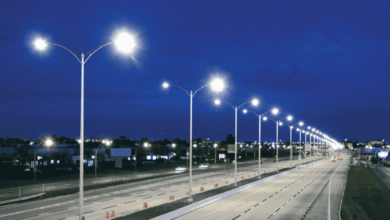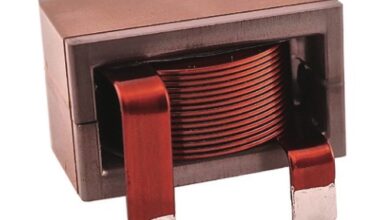How to Set Up a Video Conferencing Kiosk for Customer Interactions

In an era where digital convenience defines customer experience, businesses are turning to video conferencing kiosks as a way to offer real-time, face-to-face interactions without physical presence. These kiosks bridge the gap between virtual services and in-person support, enabling companies to assist customers in retail stores, service centres, banks, airports, and more—all via secure video connections.
Whether you’re enhancing customer support, providing virtual consultations, or streamlining service desks, setting up a video conferencing kiosk requires careful planning and the right technology. From hardware selection to kiosk design and software integration, this guide walks you through five essential components to get your kiosk up and running. We also look at how video conferencing equipment plays a central role in delivering reliable and professional customer interactions.
1. Choose the Right Display and Camera Setup
The screen and camera are the focal points of a video conferencing kiosk. A high-resolution display ensures that customers can clearly see the representative they’re speaking to, creating a more natural and engaging interaction. Touchscreen functionality is often essential, allowing users to navigate options or initiate calls without external peripherals. Screen sizes generally range from 21 to 32 inches depending on kiosk use and placement.
Just as important is the camera. A wide-angle HD camera allows staff to maintain eye contact and observe customer behaviour or body language. Placement should be at eye level to simulate face-to-face interaction. Some setups benefit from dual-camera systems, especially in kiosks intended for verification or document processing. When combined with reliable video conferencing equipment, your display and camera setup becomes the foundation of an effective kiosk experience.
2. Integrate a Reliable Microphone and Speaker System
Audio quality is as critical as video in a customer-facing kiosk. A poor microphone or speaker setup can make interactions frustrating, leading to miscommunication and poor service impressions. Directional microphones or beamforming mic arrays help eliminate background noise and ensure only the customer’s voice is picked up. This is particularly useful in noisy environments like shopping centres or airports.
Speakers should deliver clear, distortion-free audio even at moderate volumes. In some kiosks, noise-cancelling speaker technology or private listening options (such as a handset or headset) are installed to maintain privacy during sensitive conversations. It’s important that the audio components are fully compatible with your equipment, as this ensures seamless integration, better user control, and consistent performance during each call.
3. Select Secure and User-Friendly Video Conferencing Software
Behind every successful video interaction is robust software that connects people smoothly and securely. For customer-facing kiosks, your video conferencing software must be intuitive, fast to load, and able to connect without complex logins or downloads. Kiosks often run custom or pre-configured interfaces that initiate calls with a single touch, streamlining the customer’s journey from entry to resolution.
Security is also crucial—especially if customers are sharing personal data or accessing financial services. Look for software that supports encryption, secure logins, and remote monitoring. The software should also be able to integrate with CRM systems or ticketing platforms, allowing customer queries to be logged and tracked efficiently. Choosing software that aligns with your video conferencing equipment helps ensure stable connectivity, real-time communication, and compliance with data protection standards.
4. Design the Kiosk for Accessibility and Engagement
A kiosk’s physical design plays a huge role in user experience. Customers should be able to approach the kiosk comfortably, initiate a call easily, and engage with the screen and microphone without confusion. ADA-compliant design is important for accessibility—this includes adjustable screen heights, wheelchair access, and clear labelling or visual cues.
Lighting, colour schemes, and placement also influence engagement. Install kiosks in well-lit areas that are easy to find, and consider privacy panels or enclosures for confidential conversations. Interactive prompts and branding help customers understand the purpose of the kiosk and how to use it. All of these design elements should complement the video conferencing equipment, ensuring cameras have proper lighting, microphones aren’t obstructed, and screens are angled for ideal visibility.
5. Ensure Network Stability and Remote Management
Even the best-designed kiosks will fall short without reliable internet connectivity. A strong and stable network connection is essential for uninterrupted video and audio communication. Wired Ethernet connections are preferred, but Wi-Fi can be used if it’s enterprise-grade and prioritised for video traffic. Redundant networking options or 4G/5G failover can further improve uptime.
Equally important is remote management capability. IT administrators should be able to monitor the status of the kiosk, update software, troubleshoot issues, and push security patches remotely. This reduces downtime and helps maintain consistent service quality. Monitoring tools can also provide data on usage patterns and system performance, helping you refine the customer experience over time. Stable infrastructure paired with quality video equipment ensures that your kiosk remains operational, secure, and responsive around the clock.
Ready to Deliver Face-to-Face Service Without the Wait?
Setting up a video conferencing kiosk is a strategic investment that allows businesses to offer real-time, personal interaction without physical staffing at every location. By carefully selecting the right hardware, software, and support systems, organisations can provide smooth, secure, and professional virtual experiences that meet modern customer expectations.
Integrating top-tier video equipment into your kiosk ensures that both form and function work together to deliver high-quality service. As customer preferences evolve, these kiosks provide the flexibility to adapt—offering everything from instant consultations to remote troubleshooting. If your goal is to elevate service delivery, extend reach, and stay ahead of the curve, now is the time to explore how a well-built video conferencing kiosk can transform your customer engagement model.




